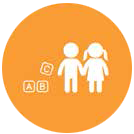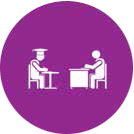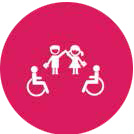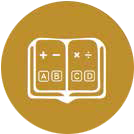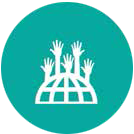Find out which global indicators are for monitoring and under methodological development.
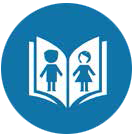 TARGET 4.1
TARGET 4.1
Free, equitable and quality primary and secondary education
By 2030, ensure that all girls and boys complete free, equitable and quality primary and secondary education leading to relevant and effective learning outcomes.
|
|
|
For monitoring |
Methodology still under development |
|||
Global indicators |
2017 |
2018 |
2019 |
2020 |
||
4.1.1 |
Proportion of children and young people (a) in Grade 2 or 3; (b) at the end of primary education; and (c) at the end of lower secondary education achieving at least minimum proficiency level in (i) reading and (ii) mathematics, by sex |
Yes |
||||
TARGET 4.2
Quality early childhood development, care and pre-primary education
By 2030, ensure that all girls and boys have access to quality early childhood development, care and pre-primary education so that they are ready for primary education.
|
|
|
For monitoring |
Methodology still under development |
|||
Global indicators |
2017 |
2018 |
2019 |
2020 |
||
4.2.1 |
Proportion of children under 5 years of age who are developmentally on track in health, learning and psychosocial well-being, by sex |
Yes |
||||
4.2.2 |
Participation rate in organized learning (one year before the official primary entry age), by sex |
No |
||||
TARGET 4.3
Quality TVET and tertiary education
By 2030, ensure equal access for all women and men to affordable and quality technical, vocational and tertiary education, including university.
|
|
|
For monitoring |
Methodology still under development |
|||
Global indicators |
2017 |
2018 |
2019 |
2020 |
||
4.3.1 |
Participation rate of youth and adults in formal and non-formal education and training in the previous 12 months, by sex |
No |
||||
TARGET 4.4
By 2030, substantially increase the number of youth and adults who have relevant skills, including technical and vocational skills, for employment, decent jobs and entrepreneurship.
|
|
|
For monitoring |
Methodology still under development |
|||
Global indicators |
2017 |
2018 |
2019 |
2020 |
||
4.4.1 |
Proportion of youth and adults with information and communications technology (ICT) skills, by type of skills |
Yes |
||||
TARGET 4.5
Equal access to all levels of education and training for the vulnerable
By 2030, eliminate gender disparities in education and ensure equal access to all levels of education and vocational training for the vulnerable, including persons with disabilities, indigenous peoples and children in vulnerable situations.
|
|
|
For monitoring |
Methodology still under development |
|||
Global indicators |
2017 |
2018 |
2019 |
2020 |
||
4.5.1 |
Parity indices (female or male, rural or urban, bottom or up wealth quintile and other such as disability status, indigenous peoples and conflict-affected, as data become available) for all education indicators on this list that can be disaggregated |
No |
||||
TARGET 4.6
Youth and adult literacy and numeracy
By 2030, ensure that all youth and a substantial proportion of adults, both men and women, achieve literacy and numeracy.
|
|
|
For monitoring |
Methodology still under development |
|||
Global indicators |
2017 |
2018 |
2019 |
2020 |
||
4.6.1 |
Proportion of population in a given age group achieving at least a fixed level of proficiency in functional (a) literacy and (b) numeracy skills, by sex |
Yes |
||||
TARGET 4.7
Knowledge and skills needed to promote sustainable development
By 2030, ensure that all learners acquire the knowledge and skills needed to promote sustainable development, including, among others, through education for sustainable development and sustainable lifestyles, human rights, gender equality, promotion of a culture of peace and non-violence, global citizenship and appreciation of cultural diversity and of culture’s contribution to sustainable development.
|
|
|
For monitoring |
Methodology still under development |
|||
Global indicators |
2017 |
2018 |
2019 |
2020 |
||
4.7.1 |
Extent to which (i) global citizenship education and (ii) education for sustainable development are mainstreamed in (a) national education policies, (b) curricula, (c) teacher education, and (d) student assessment |
Yes |
||||
TARGET 4.a
School environment
Build and upgrade education facilities that are child, disability and gender sensitive and provide safe, non-violent, inclusive and effective learning environments for all.
|
|
|
For monitoring |
Methodology still under development |
|||
Global indicators |
2017 |
2018 |
2019 |
2020 |
||
4.a.1 |
Proportion of schools with access to: (a) electricity; (b) internet for pedagogical purposes; and (c) computers for pedagogical purposes; (d) adapted infrastructure and materials for students with disabilities; (e) basic drinking water; (f) single-sex basic sanitation facilities; and (g) basic handwashing facilities (as per WASH indicator definition) |
No |
||||
TARGET 4.b
Scholarships
By 2020, substantially expand globally the number of scholarships available to developing countries, in particular least developed countries, small island developing States and African countries, for enrolment in higher education, including vocational training and information and communications technology, technical, engineering and scientific programmes, in developed countries and other developing countries.
|
|
|
For monitoring |
Methodology still under development |
|||
Global indicators |
2017 |
2018 |
2019 |
2020 |
||
4.b.1 |
Volume of official development assistance flows for scholarships by sector and type of study |
No |
||||
TARGET 4.c
Teachers
By 2030, substantially increase the supply of qualified teachers, including through international cooperation for teacher training in developing countries, especially least developed countries and small island developing States.
|
|
|
For monitoring |
Methodology still under development |
|||
Global indicators |
2017 |
2018 |
2019 |
2020 |
||
4.c.1 |
Proportion of teachers in: (a) pre-primary education; (b) primary education; (c) lower secondary education; and (d) upper secondary education who have received at least the minimum organized teacher training (e.g. pedagogical training) pre-service or in-service required for teaching at the relevant level in a given country, by sex |
No |
||||
